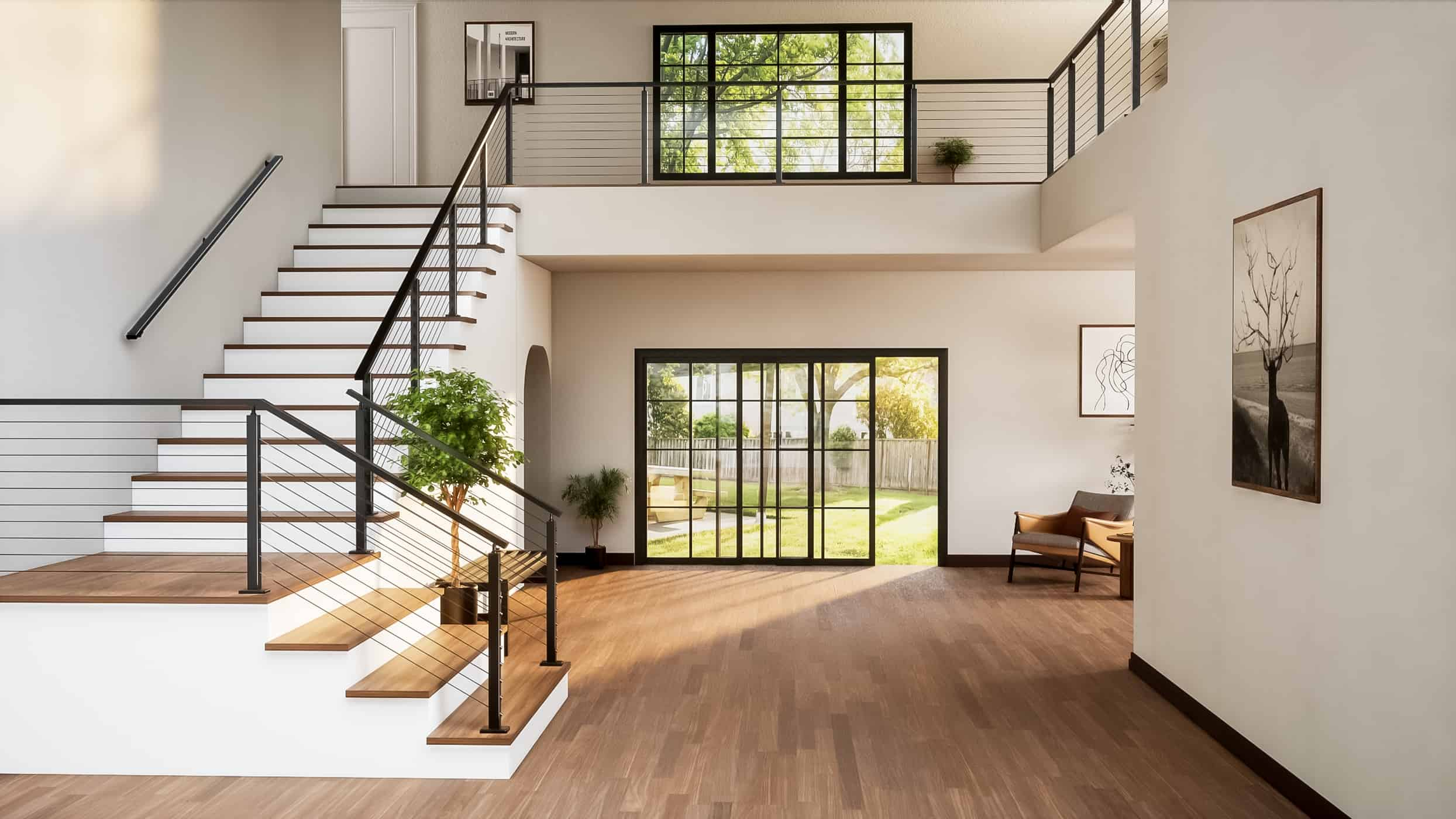Why Cable Railings Spacing Matters: Safety and Compliance Tips for Your Railing Project?
When installing cable railings for a deck, balcony, or staircase, one of the most critical factors is the spacing between cables.Proper cable spacing helps ensure safety and code compliance. In this article, we will explain why cable railings spacing is so important and provide tips to guide your railing project.

Ensure Adequate Gaps for Safety
The fundamental purpose behind cable railing spacing is to ensure safety for anyone in the vicinity. Cable railings are comprised of individual metal wire cables that are stretched tightly across posts in a horizontal manner to act as barriers. It is critical that the vertical gaps present between the cables are narrow enough to prevent people from falling through, as well as to stop objects from slipping through.
If there are gaps larger than a certain threshold size, this introduces significant falling hazards that compromise safety. Most jurisdiction's building codes mandate that cable railing gaps must be small enough that a 4-inch diameter sphere is unable to pass through the openings. Meeting this key “4-inch sphere rule” for spacing ensures that the gaps are not sizeable enough for young children to accidentally fall through. It also helps mitigate risks of pets attempting to leap between cables that are spaced too far apart across a span. Careful compliance with proper maximum spacing guidelines makes cable railings optimally safe barriers along the edges of any elevated walking surface.
Five Key Factors to Consider in Reducing Risks
The pros of incorporating horizontal cable railings into your deck design are numerous:
- Cable Diameter – Thinner 3/16-inch or 1/4-inch cables need a closer maximum spacing of 3 inches. For thicker 5/16-inch or 3/8-inch cables, 4-inches is acceptable. Choose an appropriate cable size for your planned gap distance.
- Post Configuration – More posts spread cables farther apart, requiring tighter gaps. Use fewer posts for wider spacing. Place posts strategically to enable compliant gaps.
- Building Codes – Most jurisdictions limit openings to less than 4 inches. Reconfirm your local codes for exact size standards.
- Sphere Test – Always perform a 4-inch sphere test once installation finishes. If a sphere passes through any openings, reduce spacing as needed until it cannot. This simple confirmation ensures safety for the life of the railing.
- Tensioning – Keep cables as taut as possible without over-tensioning. Sagging cables widen the gaps between them over time. Regular checks and cable adjustments preserve compliance.
Following these five guidelines carefully will lead to properly spaced cable railings optimized for safety and satisfaction with building inspections. Continue reading for further helpful spacing details and tips.

How Many Cables Do You Need?
While most cable railing installations utilize two to four cables, the number of cables used impacts spacing. More cables fill the space efficiently, requiring slightly wider gaps up to code limits. Two-cable designs mandate spacing under 3 inches, depending on cable size and post placement. This tightest spacing ensures security but lacks aesthetic openness, which some clients may prefer. Three cables enable eye-pleasing views while meeting 4-inch maximum gaps. Four cables provide optimal security and appearance for many installations. Consider your unique needs and priorities regarding security, spacing, costs, and visual appeal when choosing two, three, or four cables.
Strategic Post and Span Placement
Conventional wisdom advises having cable railing posts spaced every four to six feet across a run. However, thoughtful planning of post placements enables increased spans between posts up to code limits. It is strategic to place posts in a manner that splits the full railing run into approximately equal segments. This facilitates easier symmetrical cable installation across evenly spaced posts. Also, purposefully use additional posts at transition areas that mandate tighter gap compliance, such as stairs, ramps, or elevated viewing zones needing minimized gap openings for safety. As a stability guideline, keep standard post span lengths under eight feet maximum, which enhances the overall structural integrity while still permitting compliant cable gaps between posts. Corner posts adjacent to perpendicular runs often necessitate closer spacing than standard mid-span posts. Carefully consider the complete intended shape and all anticipated usage patterns of your unique cable railing site when developing an optimal post placement and span plan.
Specialized Cable Railing Considerations
Certain railing conditions and locations call for narrower cable gap distances or adjusted heights beyond standard specifications. For example, any cable railing installed bordering an elevated walking surface like a deck or balcony requires a minimum guardrail height of 36 inches tall. Furthermore, the vertical gaps must be calculated to 35 inches or less from the walking surface up to the bottom cable. This prevents a child that is 3 years of age or younger from potentially climbing through. Commercial buildings and shared multi-family residential spaces may necessitate extraordinarily tight cable rim gaps under 3 inches, specifically to avoid children sliding their bodies through the spacing. Additionally, popular glass panel railing systems need cable posts and wires mounted behind the glass to supply essential structural support. Fortunately, compliance with these narrower mandated spacing maximums further enhances safety and security. Always carefully reference official codes and recommended best practices for your exact railing application and location to guarantee fully compliant, safe cable spacing.
Pro Tips to Simplify Perfect Cable Spacing
Implement these professional installer tips to make achieving proper cable spacing easier:
1. Use cable spacing jigs secured to posts while installing cables to automatically set gaps correctly without measurements.
2.Tape measures attached to posts also simplify evenly measured spacing during cable mounting.
3.Mark posts with permanently measured indicators for quick visual spacing references.
4.Block off access below railings until you perform the sphere test and officially confirm compliant spacing.
5.Install extra wall-mounted blocking supports placed between posts as required in tricky areas.
These basic aids significantly streamline successfully achieving correct cable gaps to meet safety objectives and satisfy building inspection processes.
The Bottom Line
As you have now learned, proper cable railing spacing requires careful planning, strategic post placement, gap measuring aids, tensioned cables, and follow-up sphere testing. Prioritizing compliant cable gaps results in safe railing barriers securing optimal views. Balancing appearance, security, and costs with smart spacing maximizes the benefits of cable railings. Use these helpful tips to efficiently navigate the spacing requirements when installing your cable railings. Careful attention to gap guidelines protects all visitors to your balcony, deck, or stairs.

Custom Design Solutions - Fast and Free
Our experts can do all the planning, designing, and budgeting work for you without extra charge.
●Customized Design
●Shopping List
●Budget
